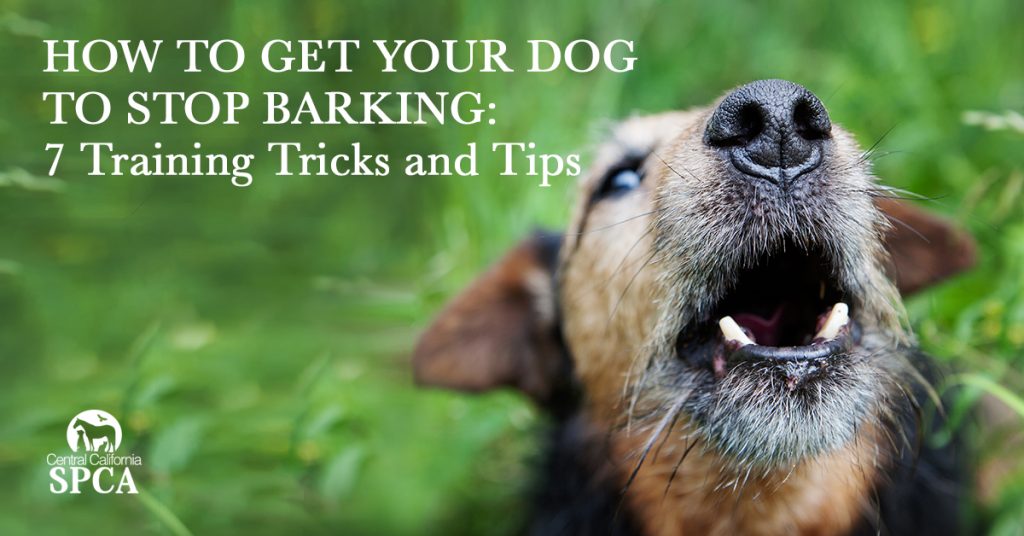How to Get a Dog from Barking: Quiet Down Your Pup!

How to Get a Dog from Barking: Dogs bark for many reasons. They may bark to express excitement, fear, or alertness.
Understanding why your dog barks is key to managing this behaviour. If you’re struggling with a barking dog, you’re not alone. Many dog owners face this challenge. Excessive barking can disturb your peace and cause frustration. It’s important to address this issue early.
Learning how to stop a dog from barking can lead to a happier home for both you and your pet. Effective methods exist to reduce barking without harming your dog. By exploring different techniques, you can find the best solution for your furry friend. This guide will help you understand barking and offer practical tips to manage it effectively.
Introduction To Canine Communication
Dogs bark for many reasons. Barking is a part of their communication. They bark to say they are happy, scared, or alert.
Understanding why dogs bark is important. Some common reasons include:
- Attention: Dogs want to play or need something.
- Fear: They may bark at strange sounds or people.
- Protection: Dogs alert us to danger.
- Excitement: Barking can show they are happy.
Excessive barking can be a problem. It might annoy neighbours. It can also stress the dog. Finding the reason for barking helps.
Training can reduce excessive barking. A calm dog is a happy dog.

How to Get a Dog from Barking
Credit: www.humanesociety.org
Identifying The Causes Of Barking
Many things can make a dog bark. Some common triggers include:
- Strangers approaching the home
- Other animals in the yard
- Noise from outside, like cars or sirens
- Loneliness when left alone
- Playfulness with other dogs
Assessing your dog’s environment is important. Look for anything that might bother your dog.
Is there loud noise? Are there new people around? These factors can cause barking.
Training Techniques To Reduce Barking
Positive reinforcement is an effective way to train dogs. Reward your dog with treats when they stop barking. This teaches them that being quiet is good. Use a calm voice to give commands. Praise them when they listen. Consistency is key. Always reward good behaviour.
Command training helps reduce barking. Teach simple commands like “quiet” or “enough.” Use a firm but gentle tone. Repeat the commands often. Be patient and understanding. Dogs need time to learn. Practice in different settings to help your dog adjust.
The Role Of Exercise And Play
Daily exercise helps reduce barking. Take your dog on walks. Aim for at least 30 minutes each day. This keeps them active and happy.
Playtime is also important. Use toys to keep your dog engaged. Games like fetch or tug-of-war are great. These activities help your dog use energy and focus.
Mental stimulation is key. Try puzzle toys or training exercises. These activities challenge their minds. A tired dog is a quiet dog.
Behavioral Interventions
Desensitisation helps dogs feel calm around triggers. Start with low-level sounds. Gradually increase the volume. Use treats to reward calm behaviour. This builds a positive connection.
Counterconditioning changes the dog’s response. Pair triggers with something good. Give treats when a dog hears a sound. This teaches the dog to expect good things.
Use these steps:
- Identify the trigger.
- Start with a safe distance.
- Reward calmness with treats.
- Slowly decrease the distance.
Managing Your Reaction To Barking
Dogs often bark for many reasons. They bark to express excitement, fear, or boredom. Reinforcing bad habits can make barking worse. Do not reward your dog when it barks inappropriately.
Stay calm. Your dog can sense your feelings. If you react with anger, it may bark more. Consistency is key. Use the same words and actions each time.
Practice positive reinforcement. Reward quiet behaviour with treats or praise. This encourages your dog to stay quiet. Training takes time, so be patient.
When To Seek Professional Help
Some dogs bark for many reasons. Signs your dog needs help include:
- Excessive barking at people or animals.
- Fear-based barking when new things appear.
- Destructive behaviour when you leave.
- Difficulty calming down after barking.
Choosing the right trainer is important. Look for someone with experience. Ask about their methods. Ensure they use positive reinforcement techniques. Check reviews from other dog owners.
Meet the trainer before starting. This helps both you and your dog feel comfortable. A good trainer will answer your questions. They will make a plan that fits your dog’s needs.
Tools And Gadgets To Assist
Bark collars can help control excessive barking. They work by giving a mild shock or sound when a dog barks. Some people worry about their safety and effectiveness. Concerns exist about causing stress or fear in dogs.
Non-invasive alternatives are available. These include:
- Positive reinforcement: Reward good behaviour with treats.
- Training classes: Teach commands to reduce barking.
- Distraction techniques: Use toys or games to keep dogs busy.
- Calming products: Use sprays or collars that soothe.
Choosing the right method is important. Each dog is different. Understanding your dog’s needs will help find the best solution.
Creating A Peaceful Home Environment
Dogs feel safe with a daily routine. Set times for walks, meals, and play. This helps your dog know what to expect. A clear schedule can calm their nerves.
Make a comfortable space for your dog. Choose a quiet area in your home. Add a soft bed and a few toys. This gives them a place to relax. Keep it free from loud noises. A peaceful zone helps reduce barking.
Use positive reinforcement. Reward your dog for being quiet. Treats or praise can help. This teaches them that calm behaviour is good.

How to Get a Dog from Barking
Credit: ccspca.com

How to Get a Dog from Barking
Credit: www.rockingtalent.com
Frequently Asked Questions
How Can I Stop My Dog From Barking?
To stop your dog from barking, identify the triggers. Common causes include boredom, fear, or attention-seeking. Use positive reinforcement to reward quiet behaviour. Training commands like “quiet” can help. Consistency is key, so practice regularly for the best results.
What Are Effective Barking Control Methods?
Effective methods include training, distractions, and environmental changes. Teach your dog commands like “enough” to curb barking. Providing mental stimulation and exercise can reduce excessive barking. Consider using calming products or consulting a professional trainer for more tailored solutions.
Why Does My Dog Bark Excessively?
Excessive barking can stem from various reasons. Dogs may bark due to anxiety, loneliness, or to alert you. Understanding your dog’s needs is crucial. Addressing these issues with training or increased exercise can help reduce barking behaviour significantly.
Is barking a sign of aggression?
Not all barking indicates aggression. Dogs bark for various reasons, including excitement, fear, or a desire for attention. Observe your dog’s body language to assess the situation. If aggressive barking occurs, consider consulting a professional trainer for assistance.
Conclusion
Dealing with a barking dog can be tough. It takes patience and practice. Use the tips in this post to help manage barking. Training and understanding your dog are key. Stay consistent with commands and rewards. Remember, every dog is different.
What works for one may not work for another. Keep trying different methods until you find what fits. With time, you can reduce barking and enjoy a peaceful home. A calm dog leads to a happy owner. Start today and make a change for the better.






[…] Dogs can be picky about drinking, and many owners worry if their pets are getting enough fluids. Dehydration can lead to serious health issues, so finding ways to encourage your dog to drink more water is important. Factors like the weather, diet, and activity level can affect how much water your dog needs. […]